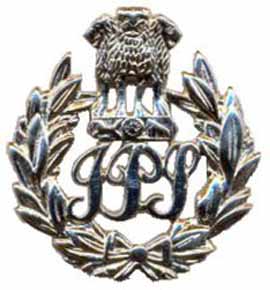The protector of Indian civilization : Indian police - Anonymous Informer
Indian Police
What's the first picture you thought when you hear Indian police.History of Indian police
The behavior of common people toward police
Ranks in Indian police service
In India, a senior superintendent of police in metropolitan, highly populated, or Naxal-affected districts or superintendent of police in smaller districts heads the police force of a district. In districts where a senior superintendent is a head, the superintendent is the head of a large urban or rural area within a district. The superintendent is also the head of a large urban or rural area in a smaller district as well. In metropolitan areas having police commissionerate systems (like in Delhi Police, Mumbai Police, or Hyderabad Police) the head of district police is called deputy commissioner of police, and he or she holds the rank of a superintendent.
Senior superintendents of police are officers of the Indian Police Service. They are entrusted with the powers and responsibility of maintaining law and order and related issues of a metropolitan district of a state or a union territory of India. They are assisted by their junior officers. The senior superintendent rank insignia is the state emblem above two stars and is worn with Gorget patches which have a dark blue background and a white line stitched on it. They wear it on their collar.
6.Assistant superintendent of police
Assistant Superintendent of Police (ASP) is still in use in India where the officer holding this rank is from Indian Police Service. However, the assistant superintendent of police is a probationary rank (till the second year of the career of an IPS officer) and is worn by officers when under training at SVPNPA. All IPS officers start their careers as Assistant Superintendent of Police. State Cadre Officer cannot hold this rank. They hold Deputy Superintendent of Police rank which is equivalent to this rank.
7.Inspector (In some states/UTs only)
Indian police officers and Constabulary who falls under non- gazetted officer's category:
1. Inspector (In some states/UTs only)
Inspector falls under both category gazetted and non gazetted officers.
2.Assistant Inspector (In Maharashtra Police only)
The Assistant Inspector helps the Inspector General in conducting audits, inspections, and reviews of financial and legal aspects of government agencies and programs which promote public health and safety. This includes looking for discrepancies in accounting as well as evaluating the efficiency and productivity of other agencies and programs.
3.Sub-Inspector (SP)
A sub-inspector (SI) is generally in command of few police personnel (with head constables, the equivalent of corporals, commanding police outposts). He is the lowest-ranked officer who under Indian Police rules and regulations can file a charge sheet in court, and is usually the first investigating officer. Officers subordinate to him cannot file charge sheets, but can only investigate cases on his behalf. He can be the station officer in some of the states like Kerala.
4.Assistant Sub-Inspector
In Police, Stations ASI are usually in charge of armories and in training centers, they are the Chief Drill Officer. In Armed Police and CRPF/BSF/ITBP/CISF, they are Platoon second in charge after the SI and are assigned the staff/administrative charge of the platoon.
5.Head Constable
Head Constable will be mainly employed to be in charge of general duty in police stations, as the officer in charge of outpost and guards, in charge of beat areas in rural and town police stations and armed reserves.
6.Constable
A constable is a person holding a particular office, most commonly in criminal law enforcement. The office of constable can vary significantly in different jurisdictions. A constable is commonly the rank of an officer within the police.
Objectives
the current roles and functions of an Indian Police Service Officer are as follows:
To fulfill duties based on border responsibilities, in the areas of maintenance of public peace and order, crime prevention, investigation, and detection, collection of intelligence, VIP security, counter-terrorism, border policing, railway policing, tackling smuggling, drug trafficking, economic offenses, corruption in public life, disaster management, enforcement of socio-economic legislation, bio-diversity and protection of environmental laws, etc.
Leading and commanding the Indian Intelligence Agencies like Research and Analysis Wing (R&AW), Intelligence Bureau (IB), Central Bureau of Investigation (CBI), Criminal Investigation Department (CID), etc., Indian Federal Law Enforcement Agencies, Civil and Armed Police Forces in all the states and union territories.
Leading and commanding various Central Armed Police Forces (CAPF) which include the Central Police Organisations (CPO) such as Border Security Force (BSF), Central Reserve Police Force (CRPF), Indo-Tibetan Border Police (ITBP), National Security Guard (NSG), Central Industrial Security Force (CISF), Vigilance Organisations and Indian Federal Law Enforcement Agencies.
To lead and command the force with courage, uprightness, dedication, and a strong sense of service to the people.
Endeavor to inculcate in the police forces under their command such values and norms as would help them serve the people better.
Inculcate integrity of the highest order, sensitivity to aspirations of people in a fast-changing social and economic milieu, respect for human rights, the broad liberal perspective of law and justice, and high standard of professionalism.
Corruption in Indian police
Is Indian police is corrupt, the answer is yes.
It is the 16th most corrupted department of the Indian government. Now if it is that much corrupted why we can't see this big corruption. It is because of type of the transaction in corruption because Police corruption is one-way corruption. The person giving bribe to Police dos not get material benefit by doing so. Unlike other departments where the transaction of bribe is two ways as an example if someone pays a bribe to someone for tender of road, then government personnel have to give him tenderly. On the contrary, in the case of police, if someone got arrested for breaking the law, he can bribe police officers on spot & get a free card.
According to the 2019 survey among all other departments of government 19 % bribe was paid to the police by common people. In that survey people also said in comparison to 2018 bribery is increased by 7 %.
Political Interference in the police department
Politicians of India do interference in the police department, they manipulate police decisions.
Some police officers said, "The biggest issue plaguing the police force is political interference and not lack of facilities".
They say that it is rampant in transfers and postings. “Political affiliations play a large role in departmental inquiries and punishment proceedings of officials. Nowadays, politicians are influencing the way in which performance appraisals and awards are given to officers and staff,” a senior officer said.“
You have to approach the MLA or a politician, especially from the ruling party, to get transfers or postings. Otherwise, you will be thrown to an inconvenient place or position. But if you get transferred on the recommendation of a politician, you will end up obeying him till the end of your term. Several times, what he says and what your senior officer orders can be two different things. This takes away your independence and makes you susceptible to punishment,” a circle inspector said.
According to a study, 72% of police officers experienced political pressure while investigating cases involving influential persons. It relies on a survey of 11,834 officers from police stations across 20 states and the National Capital Territory of Delhi. It also includes responses from 10,535 family members of police officers.
Insufficiency in Indian police
According to the UN, a country should have 222 police personnel per lakh people, While in 2016 India had 137.
Crime per lakh population has increased by 28% over the last decade (2005-2015).
CAG audits have found shortages in weaponry with state police forces. For example, Rajasthan and West Bengal had only 25% and 29% respectively in required weaponry with the state police.
The Bureau of Police Research and Development has also noted a 30.5% deficiency in stock of required vehicles (2,35,339 vehicles) with the state forces.
So basically Indian police don't have the required amount of things they need to fight crime.
CONCLUSION
- Indian police need more resources to fight crime efficiently.
- Indian police need to be freed from political pressure.
- All transactions should be more transparent in the police department.
- A department should be made for checking all police stations in India, so they work efficiently and effectively.

























No comments: